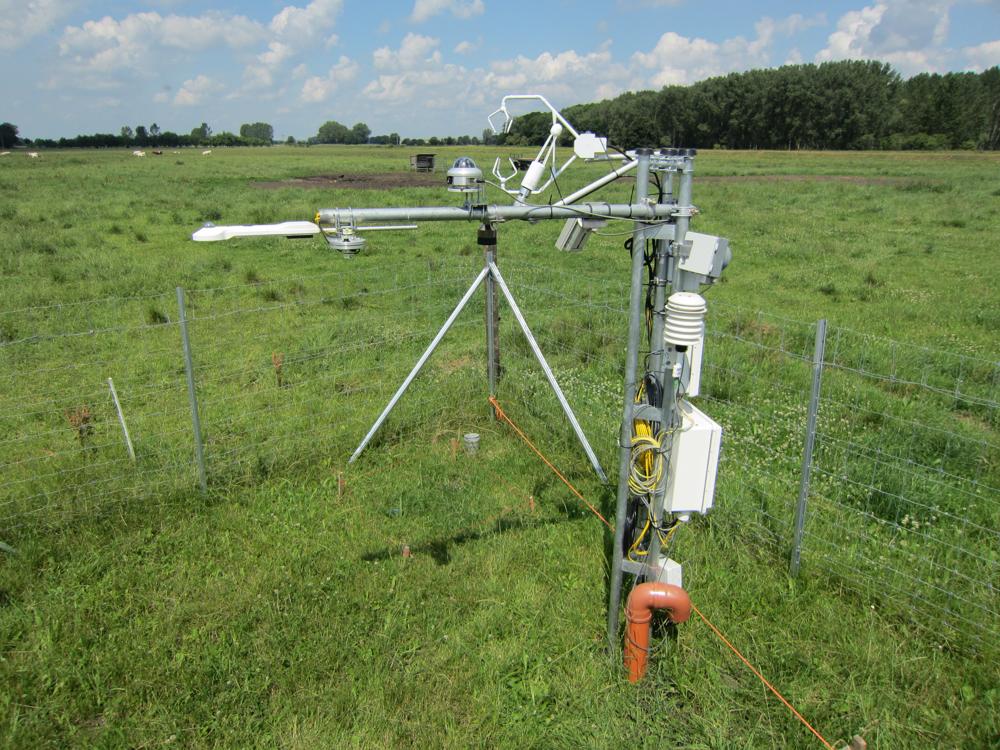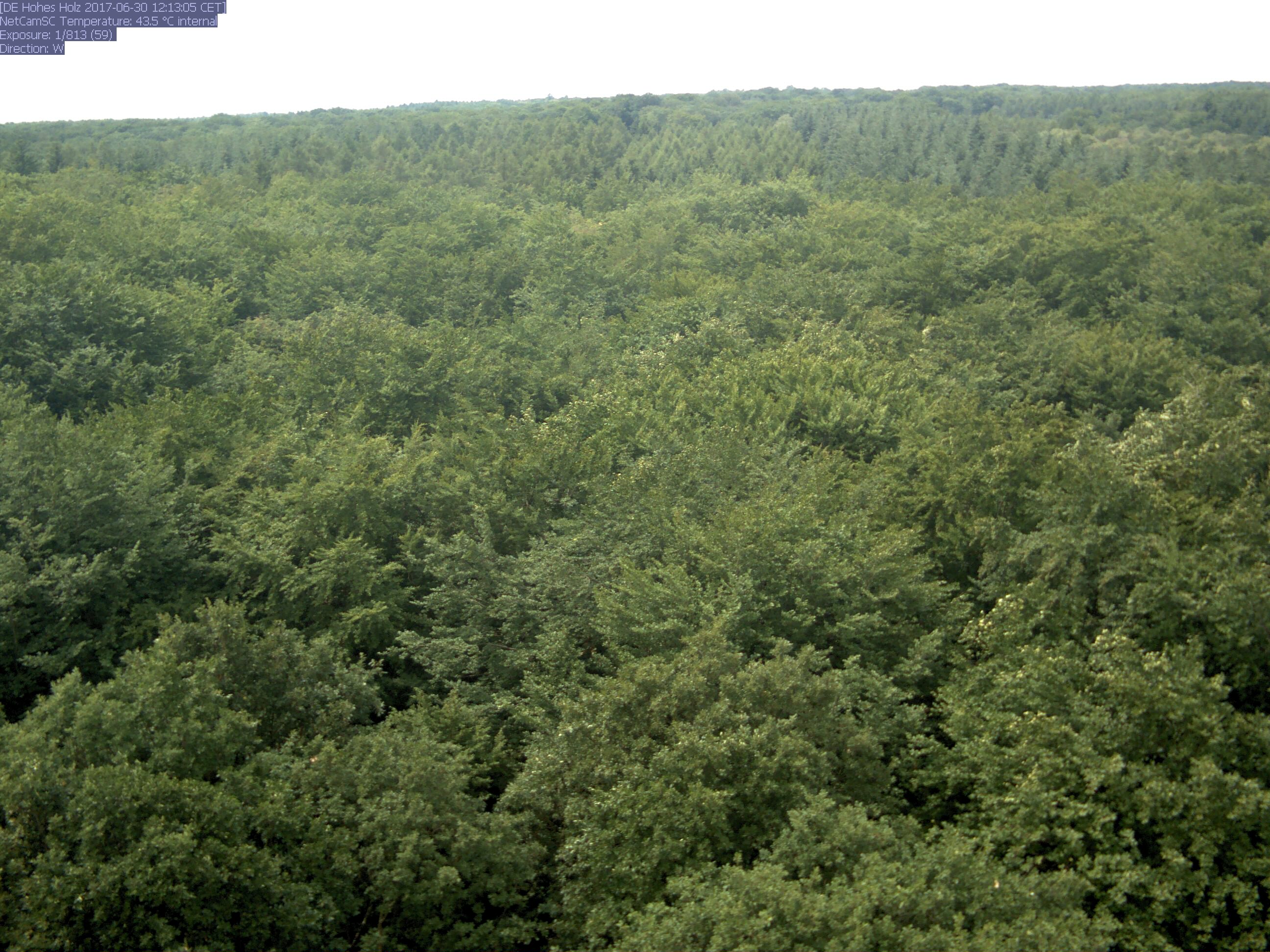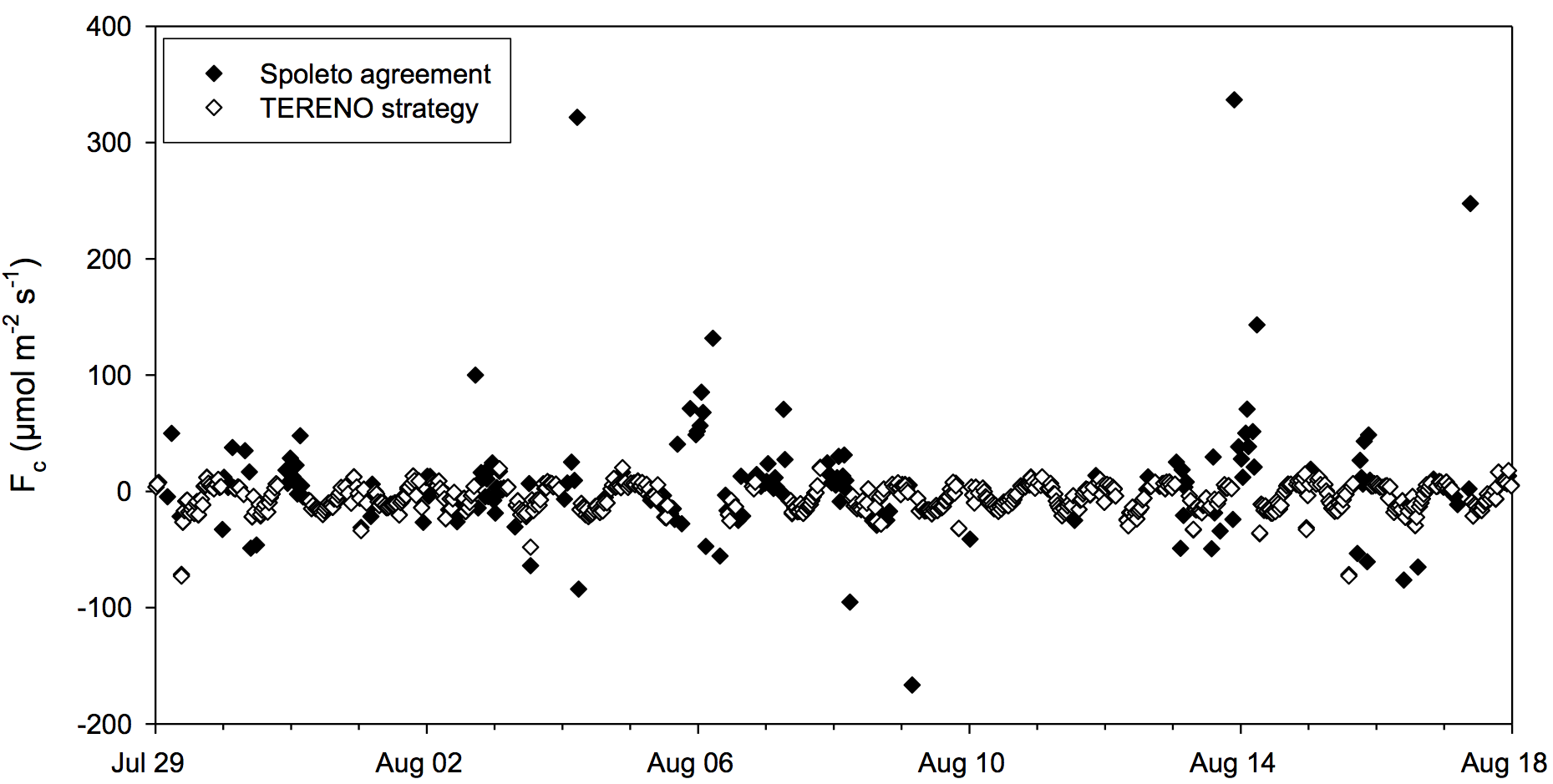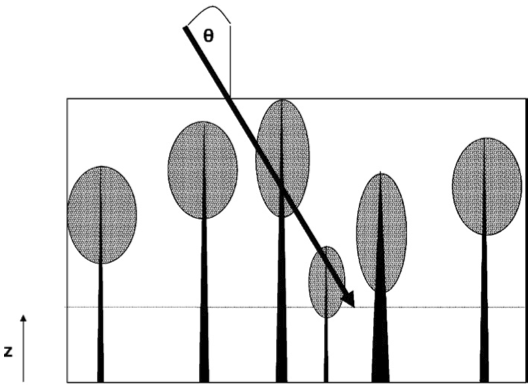TERENO / ICOS
Terrestrial Environmental Observatories -TERENOIntergrated Carbon Observation System - ICOS
A quality assessment strategy for long-term eddy-covariance measurements
The Canopy Semi-analytic Pgap and Radiative Transfer (CanSPART) model
Terrestrial Environmental Observatories
 Within the TERENO project different ecosystems are investigated with respect to their hydrological fluxes under the influence of environmental changes. The eddy covariance technique (EC) allows obtaining an integrative
estimation of the ecosystem water balance within the footprint of the
tower. However, the relative contribution from evaporation and
vegetation transpiration need to be disentangled.
Furthermore, the assessment of the water balance in response to
environmental variables and forest management need to account for the
specific heterogeneity of the stand at the lower scale. Sap flow
measurements provide information about the water use efficiency of
different tree species, the influence of the spatial structure and
age classes distribution. Three different ecosystems are investigated: a forest (Hohes Holz), a pasture (Am Grossen Bruch) and an agricultural site (Hordorf). Water fluxes assessment include also forest floor interception and soil moisture measured in high spatial resolution with a wireless network. In the moist grassland we expect huge changes of the groundwater level which is probably strongly triggering the methane fluxes which are measured there as well.
Within the TERENO project different ecosystems are investigated with respect to their hydrological fluxes under the influence of environmental changes. The eddy covariance technique (EC) allows obtaining an integrative
estimation of the ecosystem water balance within the footprint of the
tower. However, the relative contribution from evaporation and
vegetation transpiration need to be disentangled.
Furthermore, the assessment of the water balance in response to
environmental variables and forest management need to account for the
specific heterogeneity of the stand at the lower scale. Sap flow
measurements provide information about the water use efficiency of
different tree species, the influence of the spatial structure and
age classes distribution. Three different ecosystems are investigated: a forest (Hohes Holz), a pasture (Am Grossen Bruch) and an agricultural site (Hordorf). Water fluxes assessment include also forest floor interception and soil moisture measured in high spatial resolution with a wireless network. In the moist grassland we expect huge changes of the groundwater level which is probably strongly triggering the methane fluxes which are measured there as well.
Current view from top of tower at the forest site 'Hohes Holz' Contact:
Corinna Rebmann
, Matthias Cuntz
Integrated Carbon Observation System
Global change is one of the most challenging ecological problems of the 21st century. Consequently, the reduction of greenhouse gas (GHG) emissions and the optimization of Carbon sequestration by ecosystems have become priority objectives for current climate change policies. In this context, the long term research project TERENO and the international research infrastructure ICOS were created with the following general objectives:
-Determine the long term ecological impacts of global change at regional and international levels.
-Assess the effectiveness of carbon sequestration and GHG emission reduction activities, including attribution of sources and sinks by region and sector.
-Provide long-term, standardised and high precision C cycle observations required to understand the present state and predict future behaviour of the global C cycle and GHG emissions.
With these objectives, a network of long term C cycle observations were established at the regional and European scale, in which different research stations were located in priority ecosystems or in areas considered as “hot spots” for their vulnerability to C cycle perturbations.
Part of the research activities of the BAE group are devoted to the study of the C stocks and GHG fluxes in different ecosystems included in these regional and European networks (ie.: grasslands, deciduous forests and croplands). In each research station, an eddy covariance tower allows the assessment of the C (Net Ecosystem Exchange, NEE) and water balance at the ecosystem scale.
In order to achieve higher accuracy in the partitioning between net primary productivity (NPP) and heterotrophic respiration, the NEE estimated by eddy covariance need to be validated with ancillary field measurements. Moreover, the design and evaluation of global-scale carbon models requires field estimates of NPP and their response to global change and perturbations. Tower-based data of NEE will be therefore complemented and validated with field measurements of C stocks and allocation in biomass and soil, leaf area index estimations, soil respiration measurements (both with continuous measurements and survey campaigns) and with the determination of the C emissions from litter and coarse woody debris decomposition.
 Temporal variability of soil CO2 fluxes measured with automatic soil chambers
Temporal variability of soil CO2 fluxes measured with automatic soil chambers
Project members: Corinna Rebmann , Sebastian Gimper, Hendrik Zöphel
A quality assessment strategy for long-term eddy-covariance measurements
 Eddy-covariance measurements are performed at several hundred sites all over the world on a long-term basis. The gathered data are used to characterise ecosystem exchanges of trace gases, water and energy and to validate or constrain process-based models. There is an increasing demand on standardised and comprehensive quality flagging and uncertainty quantification of these fluxes. In this paper, we review established quality assessment procedures and present a comprehensive newly composed strategy including tests on high-frequency raw data, tests on statistics, fluxes and corrections, plus quantification of errors. Moreover, representativity of fluxes is checked by footprint analysis. This strategy is applied within the recently launched TERENO network of ecosystem observatories, and its robustness is demonstrated for data acquired with different measurement set-ups. Four test data sets from TERENO and one data set from CarboEurope-IP were subjected to this quality assessment strategy. The presented strategy is compared with established quality assessment schemes, and it is shown that unrealistic fluxes are now efficiently excluded while retaining the largest possible amount of high quality data. Additionally the algorithms applied provide comprehensive, reproducible, qualitative and quantitative uncertainty estimates for users of eddy-covariance flux data.
Eddy-covariance measurements are performed at several hundred sites all over the world on a long-term basis. The gathered data are used to characterise ecosystem exchanges of trace gases, water and energy and to validate or constrain process-based models. There is an increasing demand on standardised and comprehensive quality flagging and uncertainty quantification of these fluxes. In this paper, we review established quality assessment procedures and present a comprehensive newly composed strategy including tests on high-frequency raw data, tests on statistics, fluxes and corrections, plus quantification of errors. Moreover, representativity of fluxes is checked by footprint analysis. This strategy is applied within the recently launched TERENO network of ecosystem observatories, and its robustness is demonstrated for data acquired with different measurement set-ups. Four test data sets from TERENO and one data set from CarboEurope-IP were subjected to this quality assessment strategy. The presented strategy is compared with established quality assessment schemes, and it is shown that unrealistic fluxes are now efficiently excluded while retaining the largest possible amount of high quality data. Additionally the algorithms applied provide comprehensive, reproducible, qualitative and quantitative uncertainty estimates for users of eddy-covariance flux data.
Project members: Matthias Cuntz,
Corinna Rebmann
The Canopy Semi-analytic Pgap and Radiative Transfer (CanSPART) model
 We present CanSPART: a model of gap probability (Pgap) based on a simple but flexible geometric vegetation canopy structure, coupled to a one-dimensional radiative transfer scheme, to account for the effects of crown structure and trunks on vertically resolved canopy radiation fluxes. The Pgap component of the model is intended for use in inverting ground-based and airborne gap-frequency data for biometric variables, while the full CanSPART model is intended for application within a one-dimensional multilayer soil-vegetation-atmosphere-transfer model. Our approach to modelling Pgap is novel because it uses an analytic approximation to the crown porosity, which makes it computationally efficient. Further, it can accommodate any distribution of crown and trunk heights and dimensions, allowing the model to be applied to complex canopy structures with multiple layers. The Pgap model is readily rewritten in terms of a clumping factor as a function of height and angle. Simulations of Pgap(θ,z) for idealised canopies com- pared favourably with those of two other models: the Analytical Clumped Two-Stream (ACTS) model (Ni-Meister et al., 2010) and an adaptation of the Nilson (1999) model. We test the analytic approxi- mation to the crown porosity, also inherent in the Nilson (1999) model, and the applicability of a single clumping factor without angle nor height dependence. Both simplifications are demonstrated to be valid. Lovell et al. (2012, this issue) provide quantitative assessment of the Pgap component of CanSPART against ground-based lidar measurements from sites spanning a range of canopy structures.
We present CanSPART: a model of gap probability (Pgap) based on a simple but flexible geometric vegetation canopy structure, coupled to a one-dimensional radiative transfer scheme, to account for the effects of crown structure and trunks on vertically resolved canopy radiation fluxes. The Pgap component of the model is intended for use in inverting ground-based and airborne gap-frequency data for biometric variables, while the full CanSPART model is intended for application within a one-dimensional multilayer soil-vegetation-atmosphere-transfer model. Our approach to modelling Pgap is novel because it uses an analytic approximation to the crown porosity, which makes it computationally efficient. Further, it can accommodate any distribution of crown and trunk heights and dimensions, allowing the model to be applied to complex canopy structures with multiple layers. The Pgap model is readily rewritten in terms of a clumping factor as a function of height and angle. Simulations of Pgap(θ,z) for idealised canopies com- pared favourably with those of two other models: the Analytical Clumped Two-Stream (ACTS) model (Ni-Meister et al., 2010) and an adaptation of the Nilson (1999) model. We test the analytic approxi- mation to the crown porosity, also inherent in the Nilson (1999) model, and the applicability of a single clumping factor without angle nor height dependence. Both simplifications are demonstrated to be valid. Lovell et al. (2012, this issue) provide quantitative assessment of the Pgap component of CanSPART against ground-based lidar measurements from sites spanning a range of canopy structures.
The radiative-transfer part of the model is an extension of the two-stream scheme, using Pgap as input and requiring the solution of a single matrix equation. In contrast to existing modified two-stream models which use a clumping factor, we account for both the primary effect of clumping (enhanced uncollided flux intensities) and the secondary effect (enhanced interception of scattered radiation). Application of CanSPART to three contrasting Australian field sites show that Pgap, the absorption of radiation by leaves, Qleaf, and albedo are sensitive to the clumping of leaves into crowns. Except for the most sparsely vegetated site, albedo predictions were significantly too high, unless both primary and secondary effects of clumping were included. This highlights the importance of accounting for the enhanced interception of radiation scattered by leaves in a clump (relative to the unclumped case) and suggests why modified two-stream canopy radiative transfer models using a clumping factor approach may systematically underestimate Qleaf and overestimate albedo.
Project member: Matthias Cuntz
